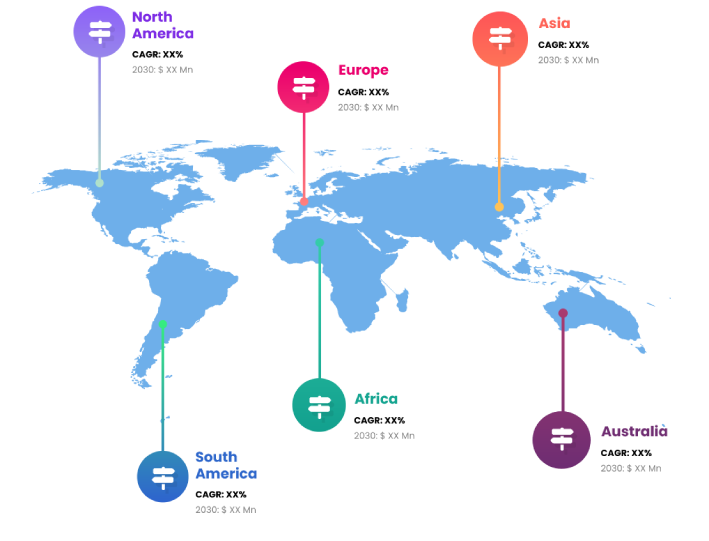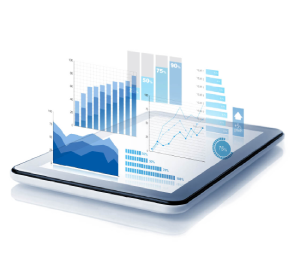
Aircraft of the future will be able to fly themselves, thanks to automated control systems, eliminating the need for a human pilot. In order to achieve such a high degree of autonomy, sensors, embedded software, and AI systems must be able to continuously detect dangerous circumstances, plot a safe course of action, and carry it out. At now, the vast majority of autonomous aircraft are drones—unmanned aerial vehicles utilized for a variety of purposes, including but not limited to: film production, agriculture, emergency rescue, military operations, deliveries, space research, and more.
Companies with a strong presence in the worldwide market for autonomous aircraft are currently investing heavily in research and development of completely autonomous products for both civilian and military use. For example, Northrop Grumman introduced the Model 437, an autonomous aircraft with a 3,000-mile range, in September 2021. The aircraft, which the business has collaborated on with Scaled Composites, might be a game-changer for the United States Air Force.
Drones, both military and civilian, have been an integral part of the conflict between Russia and Ukraine from the first. Aside from information gathering and military operations, drones have been utilized by both sides for a range of other purposes as well. Journalists often utilized them to record war crimes while covering stories in areas that were otherwise unreachable. While anti-aircraft drone attacks on Russian soldiers have received the lion's share of attention, Ukraine has also used drones to good use against Russian naval capabilities in seized Crimea. The operation in question made use of coordinated airborne and naval drones that functioned in a manner analogous to traditional torpedoes. The extensive and efficient deployment of tiny commercial drones, a tactic frequently employed by civilian volunteers to collect intelligence, is another recent development in the conflict in Ukraine. Ukrainian soldiers were able to better understand their surroundings, pinpoint Russian positions, and monitor the movement of enemy forces with its assistance.
Studying the aerospace and military industries in great detail, the "Global Autonomous Aircraft Analysis to 2031" focuses on the worldwide market trend analysis for autonomous aircraft. With thorough product, platform, application, and geography-based market segmentation, this study intends to offer a synopsis of the autonomous aircraft industry. The research gives essential data on the current state of the market for autonomous aircraft, as well as important trends and opportunities in the industry.
It is believed that cargo planes would be the pioneers in utilizing this autonomous aircraft technology. The safety of passengers and their lives is of the utmost importance when flying, hence the implementation of autonomous aircraft should only begin following extensive and ongoing testing. There is absolutely no danger to human life while using autonomous aircraft in cargo planes, hence this does not apply to them. There may be a future uptick in the need for air cargo pilots due to the rising demand for air freight driven by the expansion of the e-commerce sector.
In response to the current pilot shortage, the majority of industry advancements in autonomous aircraft are focused on commercializing autonomous cargo aircraft. For example, the United States Air Force contracted Xwing to perform pilotless cargo trials in May 2024. The Air Force and other military stakeholders will work with Xwing to determine the most effective instances of autonomous flight operations, as outlined in the contract. Autonomous takeoff and landing, Detect-and-Avoid (DAA) systems, auto braking, auto taxi, and remote operations software are all components that will be integrated during Xwing's test flights. This will allow the Cessna 208B platform to operate autonomously. The introduction of autonomous cargo aircraft into the market is anticipated to occur within the next decade, thanks to numerous ongoing breakthroughs in this area.
Report Coverage
Global Autonomous Aircraft research report categorizes the market for global based on various segments and regions, forecasts revenue growth, and analyzes trends in each submarket. Global Autonomous Aircraft report analyses the key growth drivers, opportunities, and challenges influencing the global market. Recent market developments and Autonomous Aircraft competitive strategies such as expansion, product launch and development, partnership, merger, and acquisition have been included to draw the competitive landscape in the market. The report strategically identifies and profiles the key Autonomous Aircraft market players and analyses their core competencies in each global market sub-segments.
| REPORT ATTRIBUTES | DETAILS |
|---|---|
| Study Period | 2017-2031 |
| Base Year | 2023 |
| Forecast Period | 2023-2031 |
| Historical Period | 2017-2021 |
| Unit | Value (USD Billion) |
| Key Companies Profiled | Kitty Hawk, Volocopter GmbH, BAE Systems, Boeing, Lockheed Martin, Aerovironment, Saab, Joby Aviation (Key Innovator), Aeronautics, Elbit Systems, General Atomics Aeronautical Systems, Embraer, Airbus, Karem Aircraft Inc. (Key Innovator), Bell Helicopter, Northrop Grumman, Raytheon |
| Segments Covered | • By Product |
| Customization Scope | Free report customization (equivalent to up to 3 analyst working days) with purchase. Addition or alteration to country, regional & segment scope |
Key Points Covered in the Report
- Market Revenue of Autonomous Aircraft Market from 2021 to 2031.
- Market Forecast for Autonomous Aircraft Market from 2021 to 2031.
- Regional Market Share and Revenue from 2021 to 2031.
- Country Market share within region from 2021 to 2031.
- Key Type and Application Revenue and forecast.
- Company Market Share Analysis, Autonomous Aircraft competitive scenario, ranking, and detailed company
profiles. - Market driver, restraints, and detailed COVID-19 impact on Autonomous Aircraft
Market
Competitive Environment:
The research provides an accurate study of the major organisations and companies operating in the global Autonomous Aircraft market, along with a comparative evaluation based on their product portfolios, corporate summaries, geographic reach, business plans, Autonomous Aircraft market shares in specific segments, and SWOT analyses. A detailed analysis of the firms' recent news and developments, such as product development, inventions, joint ventures, partnerships, mergers and acquisitions, strategic alliances, and other activities, is also included in the study. This makes it possible to assess the level of market competition as a whole.
List of Major Market Participants
Kitty Hawk, Volocopter GmbH, BAE Systems, Boeing, Lockheed Martin, Aerovironment, Saab, Joby Aviation (Key Innovator), Aeronautics, Elbit Systems, General Atomics Aeronautical Systems, Embraer, Airbus, Karem Aircraft Inc. (Key Innovator), Bell Helicopter, Northrop Grumman, Raytheon
Primary Target Market
- Market Players of Autonomous Aircraft
- Investors
- End-users
- Government Authorities
- Consulting And Research Firm
- Venture capitalists
- Third-party knowledge providers
- Value-Added Resellers (VARs)
Market Segment:
This study forecasts global, regional, and country revenue from 2019 to 2031. INFINITIVE DATA EXPERT has segmented the global Autonomous Aircraft market based on the below-mentioned segments:
Global Autonomous Aircraft Market, By Aircraft Size
Narrow Body
Wide Body
Others
Global Autonomous Aircraft market, By Application
Military & Defence
Civil & Commercial
Others
Global Autonomous Aircraft Market, By End User
Cargo & Industrial
Passenger
Global Autonomous Aircraft market, Regional Analysis
- Europe: Germany, Uk, France, Italy, Spain, Russia, Rest of Europe
- The Asia Pacific: China,Japan,India,South Korea,Australia,Rest of Asia Pacific
- South America: Brazil, Argentina, Rest of South America
- Middle East & Africa: UAE, Saudi Arabia, Qatar, South Africa, Rest of Middle East & Africa
You will get in-depth and extensive autonomous aircraft market market research and competitor analysis for your business to help you develop more profound insights into the autonomous aircraft market Market.
Through INFINITIVE Data Expert is a professional Market Research services, I will identify the autonomous aircraft market market size, demand & opportunities, growth rate, and target audience with a comprehensive analysis of your competitors.



